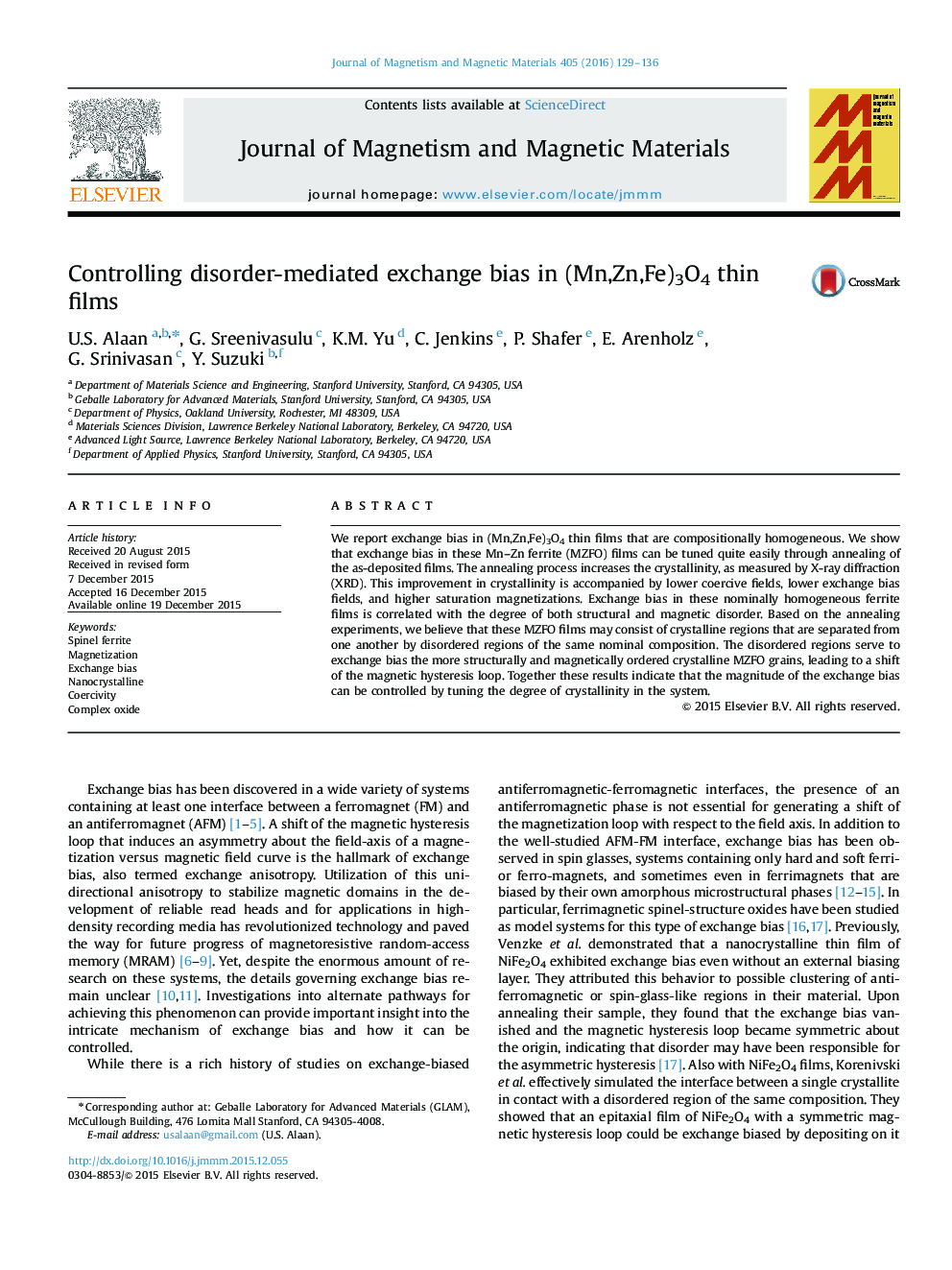| Article ID | Journal | Published Year | Pages | File Type |
|---|---|---|---|---|
| 1798264 | Journal of Magnetism and Magnetic Materials | 2016 | 8 Pages |
•Ordered nanocrystalline Mn–Zn ferrite thin films can be grown at room-temperature.•Exchange bias can be induced in Mn–Zn spinel ferrites via microstructural disorder.•Exchange bias and coercivity can be controlled via post-deposition annealing.•Structural and magnetic disorder is the likely cause of exchange bias.
We report exchange bias in (Mn,Zn,Fe)3O4 thin films that are compositionally homogeneous. We show that exchange bias in these Mn–Zn ferrite (MZFO) films can be tuned quite easily through annealing of the as-deposited films. The annealing process increases the crystallinity, as measured by X-ray diffraction (XRD). This improvement in crystallinity is accompanied by lower coercive fields, lower exchange bias fields, and higher saturation magnetizations. Exchange bias in these nominally homogeneous ferrite films is correlated with the degree of both structural and magnetic disorder. Based on the annealing experiments, we believe that these MZFO films may consist of crystalline regions that are separated from one another by disordered regions of the same nominal composition. The disordered regions serve to exchange bias the more structurally and magnetically ordered crystalline MZFO grains, leading to a shift of the magnetic hysteresis loop. Together these results indicate that the magnitude of the exchange bias can be controlled by tuning the degree of crystallinity in the system.
